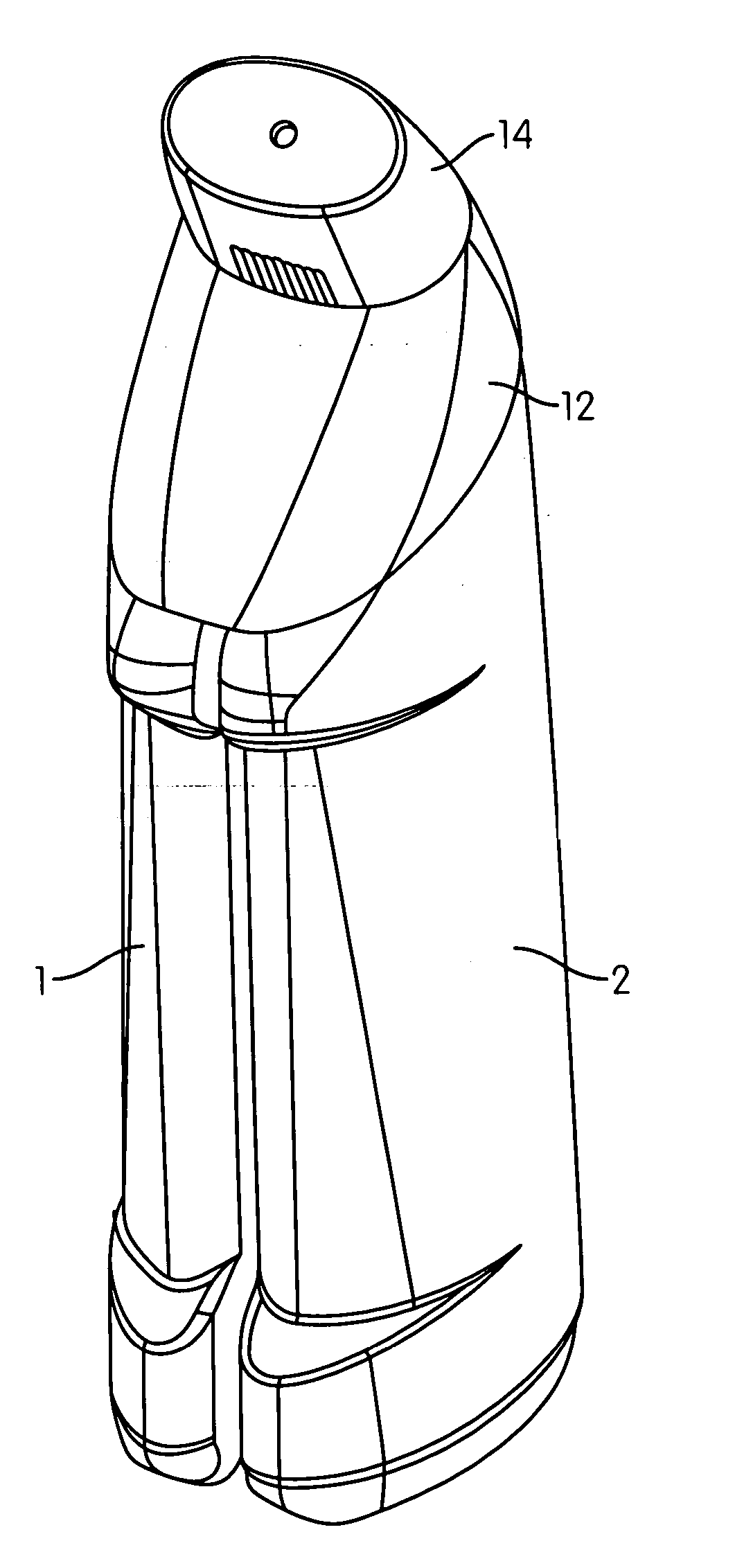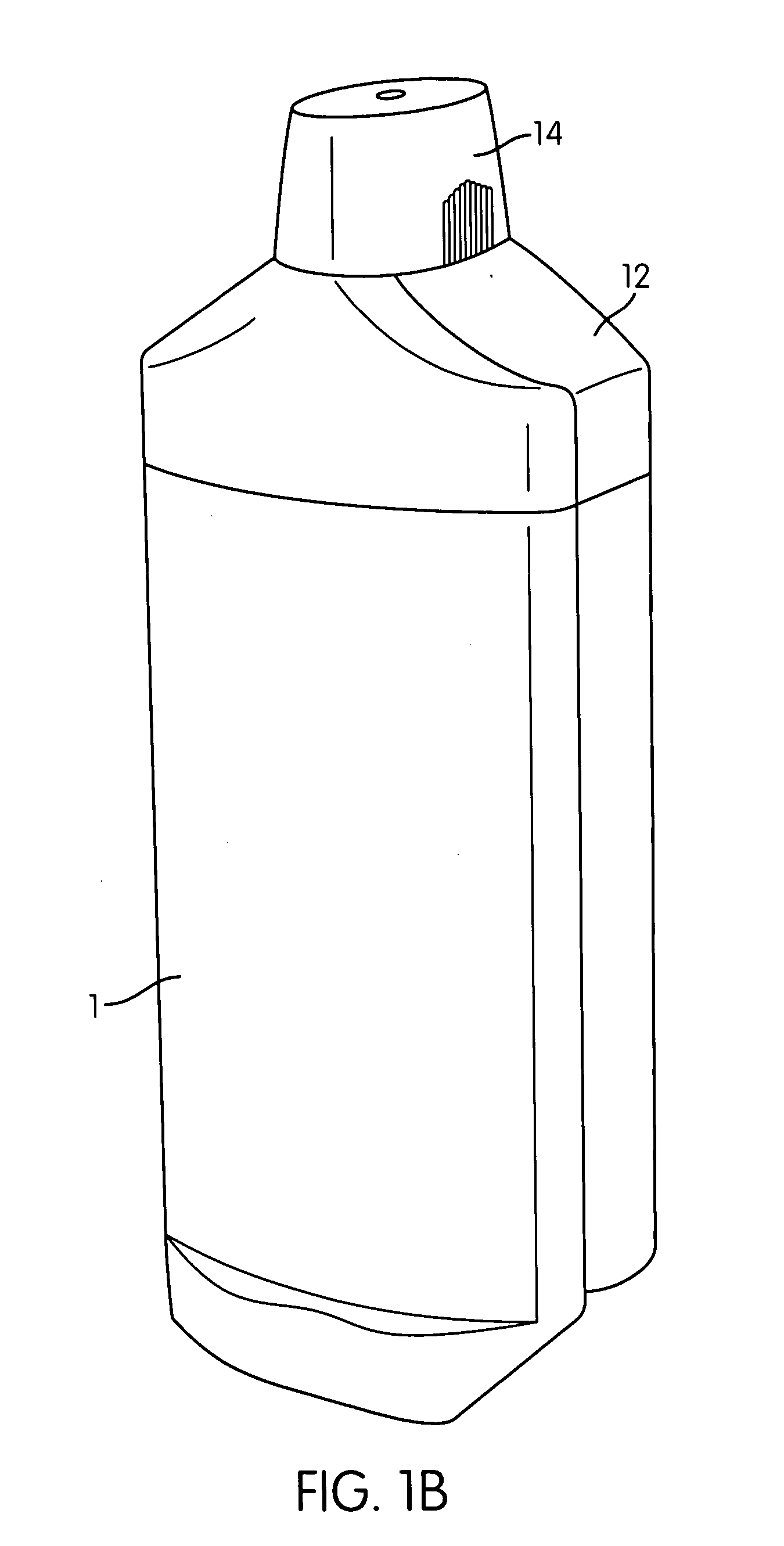Dispenser bottle for at least two active fluids
a technology of active fluids and dispenser bottles, which is applied in the field of dispenser bottles, can solve the problems of reducing the overall washing capacity of the agent, the inability to spray the dispenser bottle, and the inability to store complex steps
- Summary
- Abstract
- Description
- Claims
- Application Information
AI Technical Summary
Benefits of technology
Problems solved by technology
Method used
Image
Examples
examples of embodiment
Example 1:
[0095] Example 1 indicates different recipes of active fluids which can be used in a dispenser bottle according to the invention for lavatory cleaning.
[0096] Liquid lavatory cleaners are sufficiently known on the market. Products of that kind usually contain anorganic or organic acids for elimination of calcium and rust deposits, as well as surfactants for cleaning enhancement, abrasives, viscosity regulators, antibacterial additives, dye and perfume for odour elimination. Beyond that, alkaline lavatory cleaners are known which are formulated on the basis of sodium hypochlorite, surfactants and above-mentioned additive components. These products have a good bleaching and disinfecting action, but are not in a position of removing contaminants containing calcium. Moreover, acid-free formulations are on the market which do not in fact have any calcium removal or bleaching action, but through the surfactant content assist the cleaning result in the case of organic contaminat...
example 2
[0129] Example 2 indicates different recipes of active fluids which can be used in a dispenser bottle according to the invention for washing dishes by hand or machine.
[0130] The dispenser bottle according to the invention enables not only increase in the storage stability of flowable substances or substance mixtures, particularly of machine or hand dishwashing agents, but through use of separate receiving containers the stability of the active substances contained in the agents can be improved by separation of chemically incompatible ingredients and, at the same time, this procedure also enables simple and economic preparation of ready-for-use flowable substances in the form of ‘multi-phase’ marketing formats. Through the route of multi-phase or multiple-phase form the co-operation of different active substances in machine dishwashing agents, for example, can thus be visualised.
[0131] The volume of the storage container is oriented towards, for example, inter alia the weight propo...
example 3
[0141] Example 2 indicates various recipes of active fluids which can be used in a dispenser bottle according to the invention, also called multi-chamber container in the following, for washing textiles by hand or machine. Example 3 shows that it has been unexpectedly discovered that, from the viewpoints of storage stability and performance of the washing agent, in conditions of use an optimum results when a liquid washing agent composition is used which consists of at least two aqueous part compositions kept separately from one another, wherein a first part composition contains organic peracid and a second part composition contains surfactant and enzyme.
[0142] Separation of the part compositions preferably takes place in that they are present in a dispenser bottle according to the invention as a multi-chamber container, wherein the number of chambers (receiving containers) of the container corresponds with the number of part compositions and in each one of the chambers only a resp...
PUM
| Property | Measurement | Unit |
|---|---|---|
| outer circumference | aaaaa | aaaaa |
| distance | aaaaa | aaaaa |
| distance | aaaaa | aaaaa |
Abstract
Description
Claims
Application Information
 Login to View More
Login to View More - R&D
- Intellectual Property
- Life Sciences
- Materials
- Tech Scout
- Unparalleled Data Quality
- Higher Quality Content
- 60% Fewer Hallucinations
Browse by: Latest US Patents, China's latest patents, Technical Efficacy Thesaurus, Application Domain, Technology Topic, Popular Technical Reports.
© 2025 PatSnap. All rights reserved.Legal|Privacy policy|Modern Slavery Act Transparency Statement|Sitemap|About US| Contact US: help@patsnap.com



